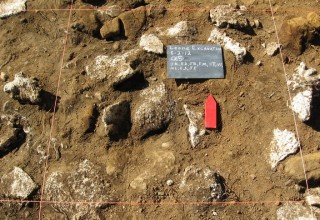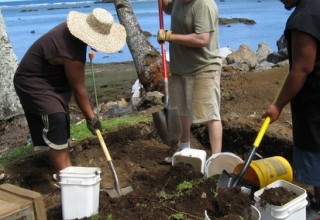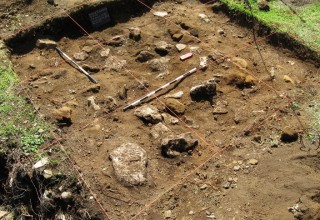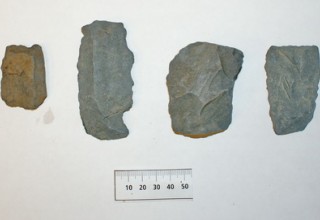Archaeologists Discover Array of Prehistoric Stone Tools in Ancient Polynesian Structure in American Samoa.
Online, October 29, 2012 (Newswire.com) - Directed by Dr. Joel Klenck, a team of archaeologists and volunteers excavated a prehistoric dwelling at Leone retrieving stone tools, pottery, and charred organic remains on the surface of an ancient floor.
A series of nine one-meter square units were excavated to a depth of nearly two meters revealing a pavement-like surface comprising flat stones of coral, basalt, and sedimentary rock. The excavation comprised a salvage effort to preserve archaeological remains before the construction of a shoreline revetment, by the U.S. Army Corps of Engineers, at the village of Leone in Tutuila Island.
The principal investigator, Klenck, remarks, "The site presented a rare opportunity to excavate a well-preserved prehistoric dwelling with many artifacts several feet below the surface of the ground."
Epi Suafoa, an archaeologist from American Samoa, states, "Being from Leone and knowing this 'fale' or dwelling was about to be destroyed, we felt it was important to help preserve our Samoan heritage and retrieve whatever cultural remains we could from the site."
The excavation at Leone was conducted to comply with a federal historic preservation law known as the National Historic Preservation Act of 1966. The Act requires that all federally funded projects take historic and archaeological sites into account by recording and avoiding damage to those sites. The American Samoa Coastal Zone Management Act of 1990 also requires that construction projects in Territory be conducted in a manner to protect historic, cultural, and archaeological sites.
David Herdrich, the Director of the Historic Preservation Office, remarks, "The discovery of the Leone structure so close to the shoreline evidences the importance of conducting historic preservation efforts before other sites are detrimentally affected by beach erosion."
The Leone site has broader application for prehistoric archaeology. Klenck states, "The Leone excavation enables archaeologists to compare how beach erosion and ordinary domestic processes affect the distribution and preservation of stone tools and flakes in a confined structure. We are analyzing the size and spread of the lithic artifacts so archaeologists from other sites with stone tools can compare their data to the factors that affected artifacts at the Leone site." The archaeologist concludes, "It was excellent that the team was able to both preserve Samoan heritage and gather important data to assist wider archaeological research."
By Florence Aetonu-Teo, American Samoa Historic Preservation Office.




